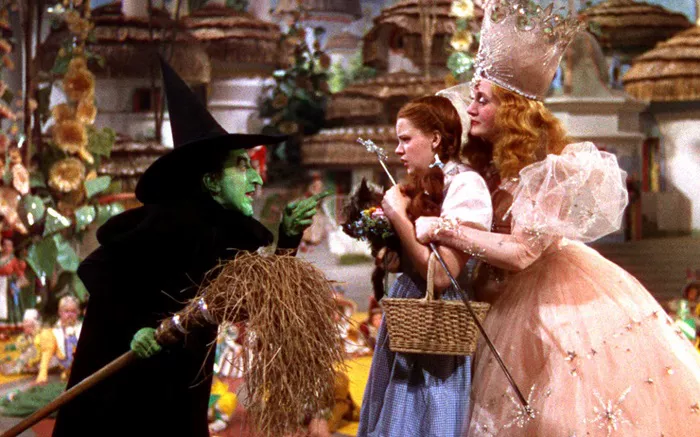Since its publication in 1900, L. Frank Baum’s The Wonderful Wizard of Oz has captured the hearts and imaginations of audiences worldwide. This iconic tale has transcended generations, leaving an indelible mark on literature, film, and popular culture. But what exactly is the Wizard of Oz famous for? Let’s embark on a journey down the yellow brick road to explore the multifaceted legacy of this beloved story.
The Birth of an American Classic
What is the Wizard of Oz famous for if not its status as an enduring American classic? Baum’s enchanting narrative, coupled with W.W. Denslow’s whimsical illustrations, introduced readers to the magical land of Oz—a realm inhabited by fantastical creatures and ruled by the enigmatic Wizard. The novel’s timeless themes of friendship, courage, and self-discovery resonate with audiences of all ages, cementing its place in literary history.
Cinematic Spectacle: The Wizard of Oz (1939)
The 1939 film adaptation of The Wizard of Oz catapulted the story to even greater heights of fame and acclaim. Directed by Victor Fleming, this cinematic masterpiece brought Baum’s characters to life in vivid Technicolor splendor. Starring Judy Garland as Dorothy Gale, the film enchanted audiences with its groundbreaking visual effects, memorable musical score, and iconic performances. “What is the Wizard of Oz famous for,” you ask? Look no further than this timeless cinematic treasure.
Cultural Iconography: Symbolism and Allegory
Beyond its surface narrative, The Wizard of Oz has been celebrated for its rich symbolism and allegorical interpretations. Many scholars have analyzed the story as a political allegory, with Dorothy’s journey representing the populist movement of the late 19th century. The Yellow Brick Road symbolizes the gold standard, the Scarecrow embodies the American farmer, the Tin Man represents industrial workers, and the Cowardly Lion symbolizes the political leaders of the time. Such depth of meaning has elevated the story beyond mere children’s literature, earning it a place in the annals of cultural iconography.
Musical Mastery: Over the Rainbow
“What is the Wizard of Oz famous for musically?” Without a doubt, it’s Judy Garland’s iconic rendition of “Over the Rainbow.” Composed by Harold Arlen and Yip Harburg, this timeless ballad captures the yearning for a place “somewhere over the rainbow” where dreams come true. Garland’s soulful performance earned the song an Academy Award for Best Original Song and solidified its status as one of the greatest musical compositions in cinematic history. Decades later, “Over the Rainbow” remains a symbol of hope and inspiration for generations of listeners.
See Also: Is the movie “12 Years a Slave” based on a true story?
Legacy of Adaptations: From Stage to Screen
The Wizard of Oz’s fame extends far beyond the original novel and its cinematic adaptation. Over the years, the story has been reimagined in various forms, including stage productions, television specials, and animated films. Each adaptation brings its own unique interpretation to Baum’s classic tale, ensuring that the magic of Oz continues to captivate audiences across different mediums. From Broadway spectacles to animated adventures, the Wizard’s legacy lives on in countless adaptations that pay homage to the enduring power of storytelling.
Emerald City Extravaganza: Merchandising and Memorabilia
What is the Wizard of Oz famous for beyond the realm of literature and film? Merchandising and memorabilia have played a significant role in perpetuating the story’s cultural legacy. From ruby slippers to action figures, the Wizard of Oz franchise has spawned a vast array of merchandise beloved by fans young and old. Collectors avidly seek out rare memorabilia, while enthusiasts proudly display their Oz-themed treasures as symbols of their enduring love for the story. The Emerald City’s allure extends far beyond the pages of Baum’s novel, permeating popular culture through a myriad of collectibles and keepsakes.
Educational Significance: Teaching Moral Lessons
At its core, The Wizard of Oz is renowned for its educational significance, imparting valuable moral lessons to readers of all ages. Through Dorothy’s adventures in Oz, readers learn the importance of friendship, courage, and perseverance in the face of adversity. The Scarecrow, the Tin Man, and the Cowardly Lion each discover that they possess the qualities they seek, demonstrating the transformative power of self-belief and determination. As a result, the story continues to be a staple of educational curricula, inspiring students to explore its themes and apply its lessons to their own lives.
Enduring Appeal: Generations of Fans
Decades after its initial publication, The Wizard of Oz continues to captivate audiences around the world, transcending generational boundaries with its timeless charm. Children and adults alike are drawn to the story’s magical world, where anything is possible with a little courage and imagination. Whether experienced through the pages of a book, the silver screen, or a stage production, the Wizard’s tale remains as enchanting and relevant as ever, ensuring its place in the hearts of fans for generations to come.
In Conclusion
“What is the Wizard of Oz famous for?” The answer lies in its enduring legacy as a beloved American classic, celebrated for its timeless themes, iconic imagery, and cultural significance. From the pages of Baum’s novel to the silver screen and beyond, the magic of Oz continues to captivate audiences worldwide, reminding us of the power of storytelling to inspire, entertain, and enchant.
























